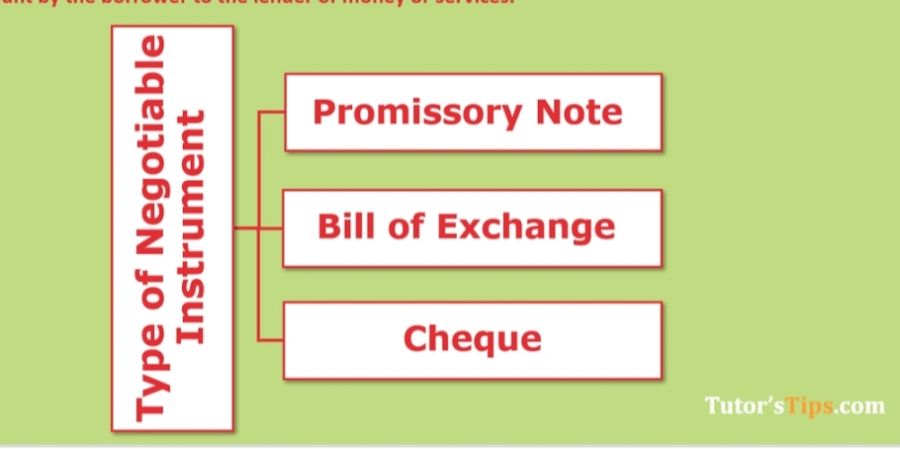

An instrument is the one which is transferable by delivery,like cash,and is also capable of being sued upon by the person holding it for the time being.
1. bearer and order instrument
2. Inland and foreign instrument
3. ambiguous and inchoate instrument
An instrument is payable to order when :- it is payable to the order of a specified person or his order or to a specified person without the addition of the words "or his order" and does not contain words prohibiting transfer.
A promissory note, bill of exchange or cheque drawn or made in India and made payable in, or drawn upon any person resident in India shall be deemed to be an inland instrument.
like this, foreign bills are those which are drawn outside India and made payable in or drawn upon any person resident in any country outside India. Bills drawn outside India and made payable in India or drawn upon any person resident in India. Bills drawn in India made payable outside India or drawn upon any resident outside India,but not made payable in India.
An ambiguous bill means an instrument which can be constructed either as a promissory note or as bill of exchange, at the selection of the holder and the instrument shall be thenceforward be treated accordingly.
The law on the point is that the holder of such a bill is at liberty to treat the instrument as bill or promissory note.
In short, the nature of the instrument will be as determined by the holder..
The instrument can be negotiable instrument if it is written with signature, made for consideration, transferd by delivery, delivers good title of ownership.
A promissory note should be in writing containing am unconditional undertaking, signed by the maker, to pay a certain sum of money only to, or to the order of, a certain person.
A bill of exchange is am instrument in writing containing an unconditional order, signed by the maker, directing a certain person, to pay a certain sum of money.
For the cheque, there are some types of cheques :- electronic cheque, truncated cheque, bearer cheque, order cheque, crossed cheque, marked cheque, etc.
The cheques marked as account payee are in a form of restrictive crossing, represented on the face of the cheque. it is not especially crossed to another banker, the paying bank needs only to see that the cheque bears no other endorsement but that of the payee.
The party who draws an instrument is called a drawer. And the party on whom it is drawn is called drawee.
For each and every instrument it is required to be accepted.
These are all the informations about the negotiable instruments..
